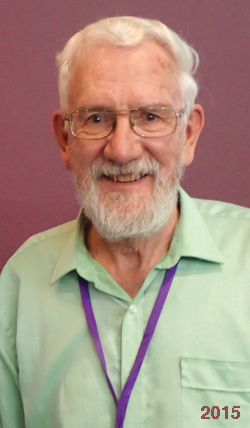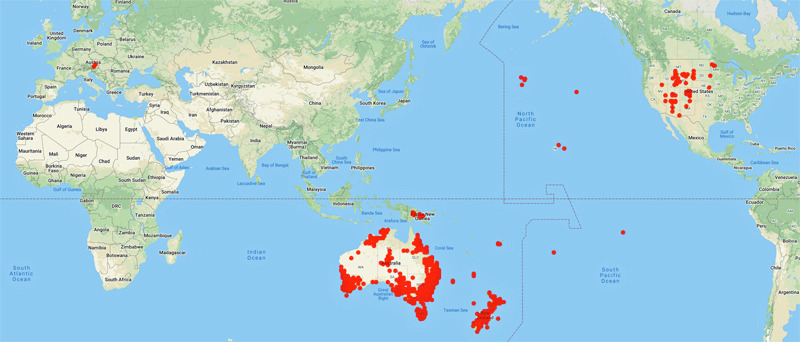
Council of Heads of Australasian Herbaria
Australian National Herbarium
Biographical Notes
 |
Council of Heads of Australasian Herbaria |
 Elix, John Alan (Jack) (1941 - )
Elix, John Alan (Jack) (1941 - )The first lichen collected by Jack Elix was
Pseudocyphellaria crocata, a luxuriant, leafy
species from Molonglo Gorge Reserve in the
Australian Capital Territory in January 1971
(JAE-001; CANB). Subsequently, he explored
most corners of Australia and many regions
beyond, building a 50,000 specimen collection
of highest-quality specimens now held in the
Australian National Herbarium (CANB).
Since his formal retirement as Professor in
Chemistry at the Australian National University
in 2002, Jack's productivity blossomed.
Freed from administrative and teaching duties,
he took on and completed many small
and large, solitary and collaborative projects,
resulting in more than 330 peer-reviewed
publications.
Jack's contributions to lichen chemistry are
many-faceted. He started life as an organic
chemist. He was on a CSIRO Fellowship to
Cambridge in 1966 where he shared a bench
with a colleague working on lichen products,
and compared to that, he found his own work
boring. So he went to the library to find out
more on lichens, but found nothing there
because it was a chemistry library. However, in
a local book shop he managed to find a second
hand copy of Mason Hale's seminal work, How
to Know Lichens. This book at least had one
chapter on very basic lichen chemistry. On his
return to Australia, Jack attended a third year
semester course at ANU on lichens, offered
by a visiting Scandinavian lichenologist, Eilif
Dahl. This got him started. It was a period when
lichen compounds were starting to be used to
assist identification, and the first stirrings of
a resurgence in Australian lichenology were
happening.
Jack's first taxonomic project was revising the
genus Hypogymnia for Australia, published in
1979. From Hypogymnia he moved to other
genera of the Parmeliaceae, with a specific
interest in Xanthoparmelia.
The critical contribution Jack made to lichen
chemistry is that he helped to shift the science
from ad hoc observations of simple colour
reactions or even movements of spots on
a tlc plate to actually understanding what
the compounds were and how they were
biosynthetically related. In this he collaborated
with other lichen chemists around the world,
most notably such 'greats' as Chicita Culberson
in the USA and Siegfried Huneck in what was
then East Germany. Jack was a key player on the
world stage in bringing lichen chemotaxonomy
into general use.
Jack's greatest contribution was his refining
and standardising the application of high-
performance liquid chromatography (hplc) to
lichens. He developed a library of spectra of
known lichen compounds, and then with the
help of a computer whiz colleague, Hector
Rodriguez, modified a commercial application
so that a computer could match spectra of
unknown samples against the library.
I hope you have not formed the impression that
Jack just sits in a chemistry lab wearing a white
lab coat. He is happiest in the field collecting
specimens, preferably with close friends,
wearing his trade-mark hat that mysteriously
never blows off and never gets crushed. He
has amassed many thousands of specimens
from all States and Territories, as well as places
like Norfolk Island and Lord Howe Island.
Source: Extracted from:
P.M. McCarthy (2015) 'John Alan ("Jack") Elix:
Nominee for the 2015 Nancy T. Burbidge Medal', ASBS Newsletter 165 (December 2015) p.34-36
G. Kantvilas (2015) 'Nancy Burbidge Lecture 2015: Jack Elix and Australian lichenology', ASBS Newsletter 165 (December 2015) p.37-43
Portrait Photo: 2015 ASBS Conference, M.Fagg, extracted from PC020153.jpg
Data from 49,547 specimens

